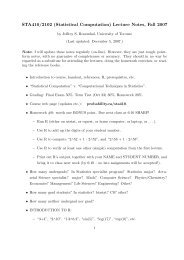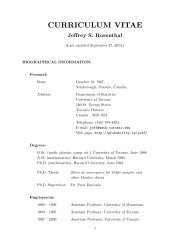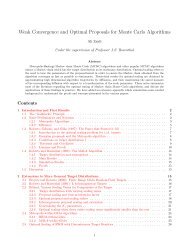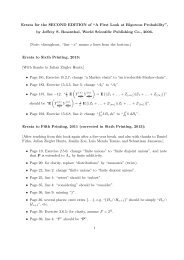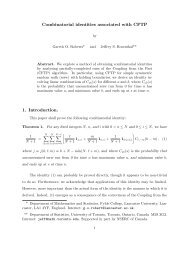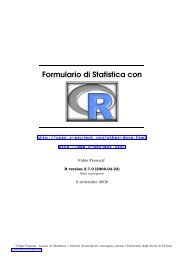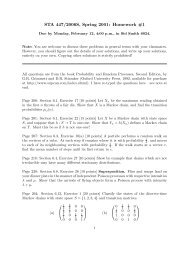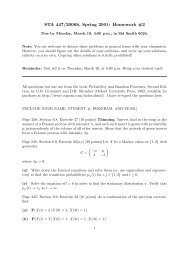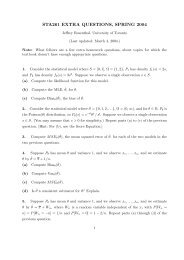Causal Inference: The R package pcalg
Causal Inference: The R package pcalg
Causal Inference: The R package pcalg
Create successful ePaper yourself
Turn your PDF publications into a flip-book with our unique Google optimized e-Paper software.
14 <strong>Causal</strong> Graphical Models: Package <strong>pcalg</strong><br />
R> suffStat pc.fit par(mfrow = c(1,2))<br />
R> plot(gmG$g, main = "")<br />
R> plot(pc.fit, main = "")<br />
1<br />
4<br />
1<br />
4<br />
2<br />
2<br />
3<br />
5<br />
3<br />
5<br />
6<br />
8<br />
6<br />
8<br />
7<br />
7<br />
Figure 4: True underlying DAG (left) and estimated CPDAG (right) fitted on the simulated<br />
Gaussian data set gmG.<br />
PC algorithm. However, due to the presence of hidden variables, it is no longer sufficient<br />
to consider only subsets of the adjacency sets of nodes x and y to decide whether the edge<br />
x−y should be removed. <strong>The</strong>refore, the initial skeleton may contain some superfluous edges.<br />
<strong>The</strong>se edges are removed in the next step of the algorithm. To decide whether edge x o–<br />
o y should be removed, one computes Possible-D-SEP(x, y) and Possible-D-SEP(y, x) and<br />
performs conditional independence tests of V x and V y given all subsets of Possible-D-SEP(x,<br />
y) and of Possible-D-SEP(y, x) (see helpfile of function pdsep()). Subsequently, all edges are<br />
transformed into o–o again and the v-structures are newly determined (using information in<br />
sepset). Finally, as many undetermined edge marks (o) as possible are determined using (a<br />
subset of) the 10 orientation rules given by Zhang (2008).<br />
<strong>The</strong> function can be called with the following arguments:<br />
fci(suffStat, indepTest, p, alpha, verbose = FALSE, fixedGaps = NULL,<br />
fixedEdges = NULL, NAdelete = TRUE, m.max = Inf, rules = rep(TRUE,<br />
10), doPdsep = TRUE, conservative = c(FALSE, FALSE),<br />
biCC = FALSE, cons.rules = FALSE, labels = NA)<br />
where the arguments suffStat, indepTest, p, alpha, fixedGaps, fixedEdges, NAdelete<br />
and m.max are identical to those in skeleton(). <strong>The</strong> option rules contains a logical vector<br />
of length 10 indicating which rules should be used when directing edges, where the order of<br />
the rules is taken from Zhang (2008).<br />
<strong>The</strong> option doPdsep indicates whether Possible-D-SEP should be computed for all nodes, and<br />
all subsets of Possible-D-SEP are considered as conditioning sets in the conditional independence<br />
tests. If FALSE, Possible-D-SEP is not computed, so that the algorithm simplifies to



